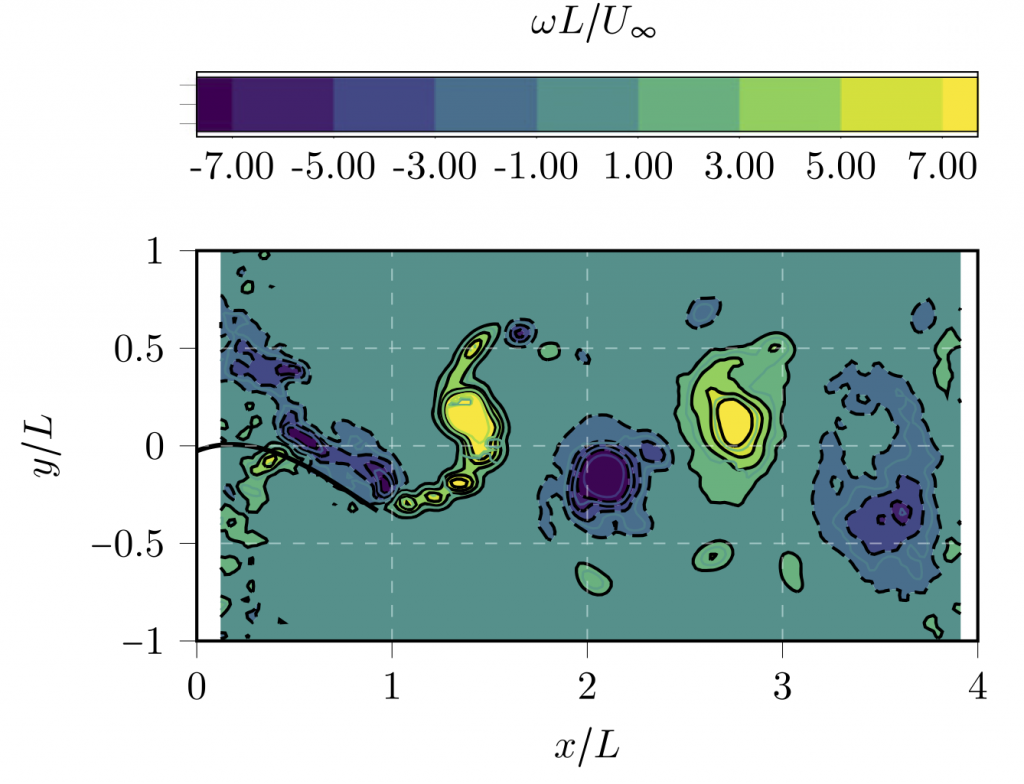The wake of a flapping foil is the basic model representing the propulsive mechanism of swimming and flying animals that use wings, fins, and body oscillations to drive their locomotion. The reverse Bénard-von Kármán vortex street is one of the landmark features of such wakes, since it is associated to the onset of thrust generation. The vortex shedding frequency is clocked by the flapping motion but, in a realistic model the force production dynamics is intimately linked to the elastic response of the flapping structure and the resonance between the different frequencies involved has been invoked in the literature to explain efficient flapping regimes. Here we show, using a wind tunnel experiment and hydrodynamic stability analysis, that thrust peaks occur when the wake resonant frequency is tuned with the foil elastic dynamics.

Wake and aeroelasticity of a flexible pitching foil
J. D’Adamo, M. Collaud, R. Sosa & R. Godoy-Diana
Bioinspiration & Biomimetics 17, 045002 (2022)
doi: 10.1088/1748-3190/ac6d96
[pdf file]